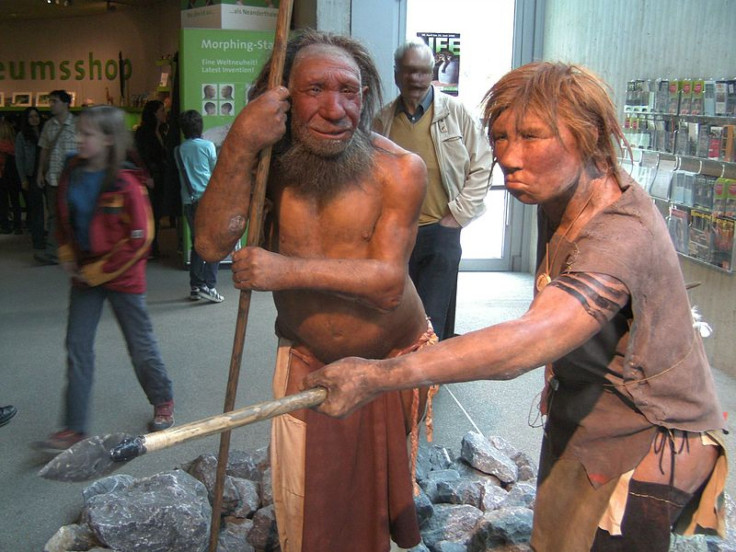World’s Oldest Tumor Discovered In Neanderthal Bone, Fibrous Dysplasia Found In 120,000 Year-Old Rib

Researchers have found a tumor in a Neanderthal bone that is more than 120,000 years old.
The world’s oldest tumor, found in a Neanderthal rib, is a fibrous dysplasia – a bone disorder where scar tissue develops instead of normal bone. The rib was part of a collection of bones excavated more than 100 years ago from a site in Krapina, Croatia. They were X-rayed in the 1980s, but the tumor wasn't initially revealed. It was only when scientists took a closer look at a radiograph where a rib fragment appeared to be “burned out” that they returned to the rib and subject it to higher-quality scans.
"They were really great radiographs, in terms of the way people go about diagnosing things, but we were getting basically black images of the bones," Janet Monge, the paper's lead author and a physical anthropologist at the University of Pennsylvania, told National Geographic. "All of the internal structure of the bone was missing. And we thought there was a tumor there. But you don't want to say it's a possibility; you want to say it definitively."
The new images showed a hollow shell where a network of “spongy bone” should be. The discovery reveals that Neanderthals were susceptible to the same kind of tumors modern-day humans can get, National Geographic reports.
"We do see it in human patients today," Monge told LiveScience. "It's exactly the same kind of process and in the same place."
David Frayer, an anthropologist at the University of Kansas and one of the authors of the study published in PLOS ONE, says the Neanderthal with the tumor most likely suffered.
"They range all the way from being totally benign, where you wouldn’t recognize them, to being extremely painful," Frayer told LiveScience. "The size of this one, and the bulging of it, probably caused the individual pain."
Neanderthals lived about 200,000 years ago in what is now Europe and central Asia. They were a human species that shared several defining features with other sub-species, including the shape of their skulls and size of their brains. Some modern-day humans, especially Europeans, share Neanderthal DNA. While some maintain that Neanderthals interbred with humans, new evidence shows that might not be the case. Some believe the genetic link is caused by a common ancestor that may have lived in North Africa, the Guardian reports.
Despite the thousands of years that separate humans from Neanderthals, both species share many commonalities, Monge says.
"They lived their lives basically the same way we did and basically with the same problems that we have," she said.
© Copyright IBTimes 2025. All rights reserved.




















